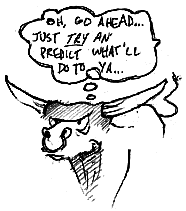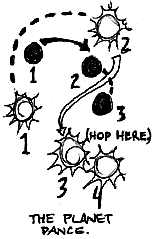Though I am an acolyte to the sciences, I have become disenchanted with them. It is refreshing, from time to time, to hear the naive but sincere sentiments from people whose opinions of science date back to the Enlightenment: "Science can understand everything." I'm sorry, but that's just not true.
It has to be understood that any scientific theory is subject to cultural interpretation, which then can change it's meaning. Look what happened to Darwin's theory of evolution, particularly the "survival of the fittest." When the businessmen finally got around to either reading Darwin or hearing bastardized half truths about what he said, they thought to themselves, "Hey...not bad. Survival of the fittest? Competition? Just like business!" Soon you had everyone trying to make a biological model fit social functioning. Sure there are similarities, but if you're not careful, you get eugenics.
No, science can not understand everything; science can only understand what it can observe. Can't see it? Can't measure it? Can't explain it. On top of that is the ethnocentric baggage that every individual carries around with them. Need proof? Look at how blindly the monks of the Middle Ages followed the words of Aristotle, even when it was obvious he was wrong. Hell, the only reason the Church recognized that a vacuum could be created was because they needed a place for heaven to exist once the idea of the "heavenly spheres" was shot to hell. The heresy of the thermometer....
Scientists are nothing more than well conditioned lab rats. Pavlov taught dogs to salivate at the sound of a bell, only because the dogs could recognize a connection between the bell and food. Scientists just recognize patterns. Pull the level and get a food pellet....
In fact, now that I think about it, animal behaviorists make the best lab rats. The behaviorist's method, in field or lab, is to record accurate data, measure precise distances and exhaustingly catalog number and shape of moose doots per square mile. While they painstakingly gather data to chart graphs that will make other animal behaviorists cry, they tend to miss how an animal acts as a complete entity. Behavior is a complex mesh of parts, and sure it helps to break all these parts down to sections that can be convenietly studied, but don't think that a chart of bat food consumption versus environmental temperature explains bat behavior. It's usually right when a human thinks he can predict an animal's behavior that the human gets gored.
Let me give you an example of the limitations of science. Get up in the morning and watch the sun rise (there's a hint in that phrase). Now we, in our educated aloofness know that the earth goes around the sun (so the sun doesn't rise...the earth falls), but if the sun did go around the earth, it would look exactly the same. The earliest astronomers were just noticing patterns, and came up with a good theory. There was just one problem; actually, a whole bunch of them: planets. All the others stars scrolled smoothly across the sky except for those pesky "wandering stars." They'd go forward, then back, then seem to stand still.
|

|




